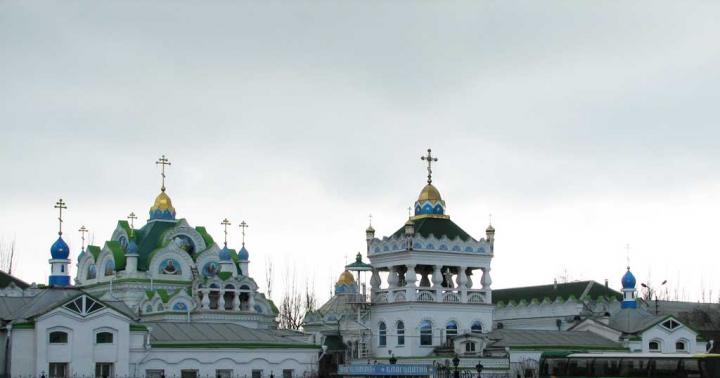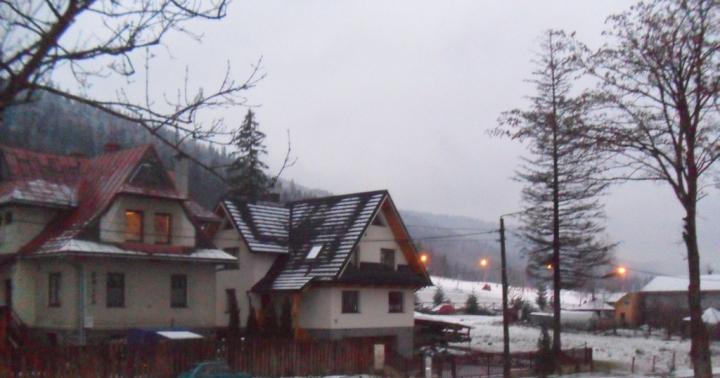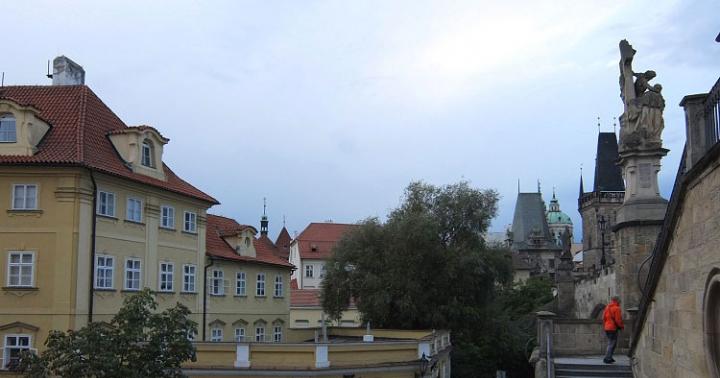CHOOSE THE CORRECT ANSWER.
In the 2nd century. translated in Rome
farmers
For Rent
To free lands
In the province
Trajan condemned
Criminals
Informers
bribe takers
Trojan conquered
Dacia
Parthia
Syria
The Romans invented
Cement
Concrete
Whitewash.
"ETERNAL CITY" AND ITS RESIDENTS
LESSON PLAN.
1. ROME - THE “HEART” OF THE EMPIRE.2. CITY BUILDINGS.
3. PUBLIC BATH.
4. “BREAD AND SCENE.”
LESSON ASSIGNMENT
? They tried to move to Romeinhabitants from all Roman provinces.
What do you think attracted them to
« The eternal City» ?
1. ROME - THE “HEART” OF THE EMPIRE.
Rome had a huge number of buildings designed to emphasize the power of the empire.On many city forums
were installed
triumphal arches in
honor of victories over enemies
Triumphal Arch
1. ROME - THE “HEART” OF THE EMPIRE.
For glorificationemperors for many
Forums were built
columns.
On the column itself
fit
bas-reliefs with scenes
lives of emperors, and
crowned by columns
multi-meter statues
emperors.
1. ROME - THE “HEART” OF THE EMPIRE.
Coliseumin Rome.
The symbol of the city was the Colosseum building, intended for organizing spectacles and holding performances.
It accommodated about 50 thousand spectators
The Pantheon is a temple of all gods.
Bricks of the domeheld together with cement
pumice
D-8.5 m.
Niches.
Lightened the dome.
Natural
Lighting.
Height
domes-43 m.
Walls
lined
marble.
Domus - home of a wealthy Roman
Atrium-heatedguest room.
Rented
premises
Rolling
roofAtria.
Residential
rooms.
Cabinet.
Dining roomtriclinic.
Insula city buildings.
Roomsthe poor.
Rich people's rooms.
Public
toilets.
Taverns.
Garbage and slop
were thrown away
outside
Rooms for
nobility
2. CITY BUILDINGS.
In cold times, houses were heated. The Romans warmed the floor and pipes on purpose.You came up with a central heating system.
made within the walls of a building.
During construction on the ground floor
Heated
the stone is very
saved for a long time
warm.
established
special
fireplaces.
3. PUBLIC BATH.
In the 3rd century in Rome there were 1000 private and 11public baths. One of the most beautiful
buildings of the city were considered the TERMS (baths) of the emperor
Caracallas.
Thermal Baths
Caracallas.
3. PUBLIC BATH.
At the entrance there were changing rooms withchambers for storing clothes.
3. PUBLIC BATH.
In one of the rooms withhigh temperature,
a swimming pool was built. IN
this humid atmosphere
visitors steamed and
sweated.
Caldarium - warm pool.
3. PUBLIC BATH.
In one of the hallsthere was a big
pool with cool
water to
visitors could
cool down after
visits to the steam room.
Frigidarium-pool
with cool water.
4. “BREAD AND SCENE.”
Chariot racing.Rising Power of the Empire
led to the fact that
the poor people of Rome
wanted to work.
They demanded from the state the free distribution of bread and equipment
mass spectacles.
The most favorite spectacle was the chariot races, which attracted dozens of
thousands of spectators.
Thousands of residents of Italy and the provinces sought to get to Rome. Some came on trade business, others wanted to get a profitable position. But everyone was attracted to gladiatorial games, chariot races and triumphal processions.
The city was decorated with palaces on the Palatine Hill, statues of gods and emperors, temples and porticos, and numerous fountains.
Columns were built at many Forums to glorify emperors.
On the column itself there were bas-reliefs with scenes of the life of the emperors, and the columns were crowned with multi-meter statues of the emperors.
The huge Colosseum amphitheater, which could accommodate 50 thousand spectators, stood out for its size and beauty. Construction was carried out over 8 years, in 72 - 80, as a collective construction of the emperors of the Flavian dynasty. For a long time, the Colosseum was for the residents of Rome and visitors the main place for entertainment spectacles, such as gladiator fights, animal persecution, and naval battles. Under Emperor Macrinus, it was badly damaged by fire, but was restored by order of Alexander Severus. In 248, Emperor Philip still celebrated the millennium of Rome's existence there with great spectacle. Honorius in 405 banned gladiatorial battles as being inconsistent with the spirit of Christianity, which became the dominant religion of the Roman Empire after Constantine the Great; however, animal persecution continued to occur in the Colosseum until the death of Theodoric the Great. After this, sad times came for the Flavian Amphitheater.
Another attraction of Rome was the Pantheon temple (literally - the temple of all gods). The Pantheon was crowned with a dome that looked like half a ball. There was a huge hall inside the temple. There was a hole in the center of the dome through which light penetrated.
Rich, prosperous Romans lived on the hills, where there was a lot of fresh and clean air. There were no windows in the main room of the house; 4 columns supported the ceiling. There was a swimming pool in the house where rainwater fell. Here the owner of the house received guests who came on business. And he invited only close friends to the house, to the fragrant garden. There were many bedrooms in the house. The house also contained an office, slaves' bedrooms, a dining room, and a storage room.
Most Romans could not have their own home, so they rented housing in 5-6 storey buildings. The poor huddled in little rooms under the roof tiles. There were no signs on the streets with street names and house numbers. Slops often poured out of their windows onto passers-by. There were no stoves; on damp and cold days, residents warmed themselves with braziers, into which charcoal was poured. Food was prepared right there. The poor often ate dry food. The windows of the houses had no glass and were closed with shutters.
The city of Rome celebrates its 2766th anniversary this year. The history of the city is its monuments, which amazed with their grandeur and scope at all times. It is no coincidence that the city of Rome is called the Eternal. In today's lesson we will do unusual excursion By ancient city, let's plunge into the atmosphere of imperial Rome.
Background
In II AD. The Roman Empire reached its peak (see lesson). The center of the huge empire was the city of Rome. 372 stone-paved roads led from it to all ends of the empire (provinces), and every thousand steps signs appeared indicating the distance to Rome. Rome and its major buildings, such as the Pantheon, were designed to embody the idea of the power and greatness of the empire.
Events
Main structures in Ancient Rome
During this period, more than a million people lived in Rome. Thousands of residents from Italy and the provinces sought to get to Rome every day. Some came on trade business, others wanted to get a profitable position in the service of the emperor. Some came to watch the gladiatorial games in the Colosseum (Flavian Amphitheater), which could seat about 50 thousand people, or the chariot races in the Circus Maximus.
The main attraction of Rome was the Pantheon (temple of all gods). The Pantheon is topped with a dome that looks like half a ball. The temple is built of brick and concrete, and the inside is lined with marble (Fig. 1).
The central square of Rome was the Forum (Fig. 2). Here was the temple of Saturn, the temple of Vesta, the keeper of the hearth, the Milliarius column (from which distances were measured not only in Rome, but also outside it), and the curiae buildings were located in which the Senate met and trials were held.

Rice. 2. Roman Forum ()
Each emperor sought to build his own forum. This is how the Forum of Caesar, the Forum of Augustus, the Forum of Trajan and others appeared in Rome.
The Romans loved to visit the theater. The first permanent stone theater was built around 55 BC. e. commander Gnaeus Pompey the Great. The Theater of Marcellus was built in 12 BC. e. and could accommodate 11 thousand spectators. The actors used masks and colorful clothes so that the audience understood who was in front of them - an old man or a young maiden. All roles in the Roman theater were played by men. The theatrical craft was considered an unworthy occupation.
One of the most visited public institutions in Rome were baths - thermal baths (Fig. 3). In total, there were more than a thousand public baths in Rome. The largest and most luxuriously decorated baths were built by order of Emperor Trajan. The Romans came here to relax and enjoy a pleasant conversation; sports grounds, swimming pools and libraries were also located here.

Rice. 3. Roman baths ()
Rome was largest city empire, it was called eternal, golden, or simply - the City.
Bibliography
- A.A. Vigasin, G.I. Goder, I.S. Sventsitskaya. Ancient world history. 5th grade. - M.: Education, 2006.
- Nemirovsky A.I. History reading book ancient world. - M.: Education, 1991.
- Ancient Rome. Book for reading /Ed. D.P. Kallistova, S.L. Utchenko. - M.: Uchpedgiz, 1953.
- Slovari.yandex.ru ().
- Dic.academic.ru ().
- theater.helllab.ru ().
Homework
- What public places were the most popular among the Romans?
- What public spectacles were staged at the Circus Maximus?
- What public institutions were located at the Forum?
- Why did the Romans visit the baths?


